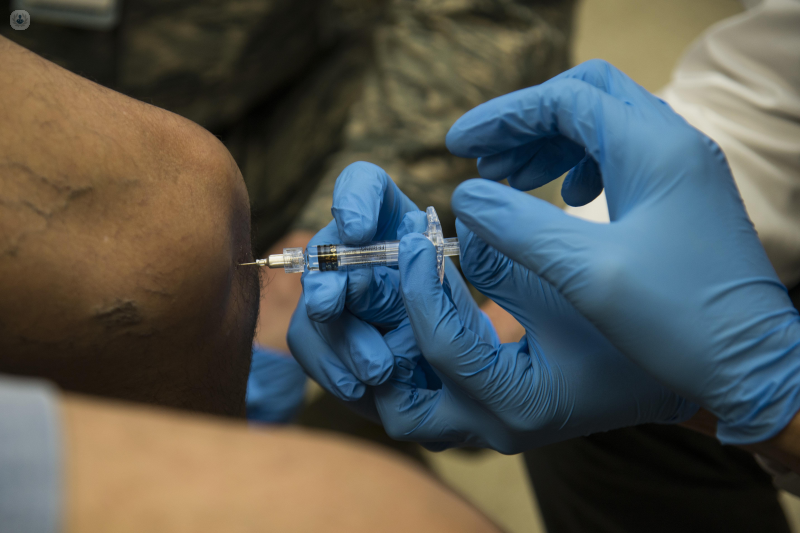The nStride injection - how it can help with osteoarthritis in the knee
Autore:Osteoarthritis in the knee has traditionally been managed with steroid injections to relieve pain, and in the end stage, a knee replacement. For younger patients neither of these treatments are ideal in the long term, so could a new treatment called the nStride injection offer a solution? We asked leading consultant orthopaedic surgeon Mr Charles Willis-Owen how the nStride injection works and how it differs from other therapies.
What is the nStride injection?
The nStride injection is a new type of therapy for the knee. It is an autologous injection, meaning the substance injected is taken from your own body.
What conditions does the nStride injection treat?
nStride is mainly used in the treatment of early osteoarthritis on the knee. It is ideal for younger people with knee arthritis who want to avoid surgery, and anyone who does not like the idea of a knee replacement for early arthritis. The aim is to treat the symptoms of osteoarthritis, as well as slow the progression of the condition.
How does the nStride work to improve symptoms?
nStride involves taking blood from a vein in your arm like an ordinary blood test, extracting the white blood cells in a centrifuge, and then spinning them again to get the good proteins out of those white blood cells.
It is these healing proteins that we then inject into the knee. These can then supercharge the healing process by enhancing your body’s own ability to control inflammation.
The result is reduced pain, reduced stiffness and increased mobility and flexibility.
How many nStride injections are needed to produce results?
Good results are seem after just one injection, and that is all that is needed. It has been shown to give improvements for as long as two years.
How do nStride and platelet-rich plasma (PRP) injections differ?
Platelet-rich plasma is another common knee injection, but this uses concentrated platelets only. These are components of your blood which are involved in clotting. The evidence for them in knee arthritis is not very strong, but they are useful for other indications such as tendon problems.
In contrast, nStride uses healing proteins from within the white blood cells, so it is much better placed to treat conditions which cause damage to soft tissues such as the cartilage, which often does not heal well on its own.



